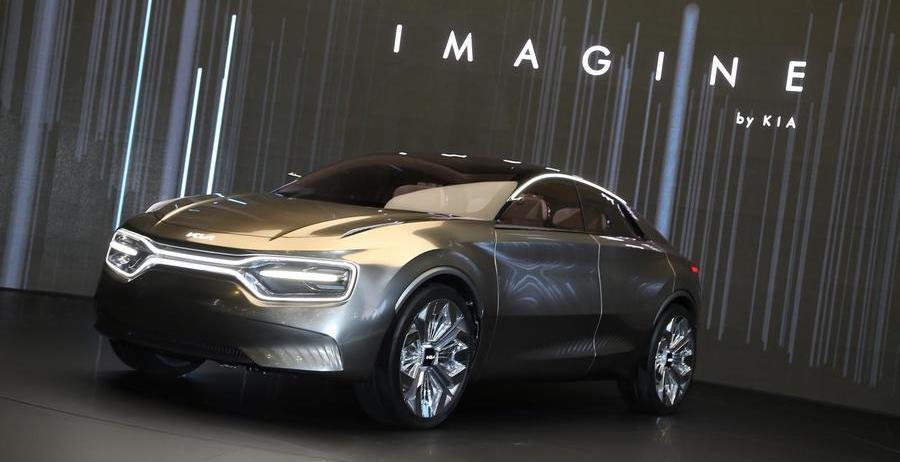Next Kia EV will be 'super-high-performance' halo model

Kia's next electric vehicle (EV), due to arrive in 2021 based on last year's Imagine concept, will be a high-end, high-performance showcase for the firm's future line-up.
The zero-emissions model, which will take a new nameplate, will sit above the existing e-Niro and Soul EV crossovers. Adding a third, larger model will help Kia reach its goal of a 6.6% global EV market share by 2025
Pablo Martínez Masip, Kia's product planning chief, describes it as being "as significant in showing our EV capability for the future as the Stinger was for showing how far Kia had progressed when it was launched".
The Korean manufacturer recently announced its plan to launch 11 electric models by 2025 as part of a £19 billion strategy to transform into a maker of electrified vehicles and mobility solutions within the next five years.
Speaking about the 2021 EV, Kia marketing chief Carlos Lahoz said: "This car will have a significant effect on how consumers perceive Kia and its part in future electrification. We want it to demonstrate super-high performance levels but in a package that is different. Today there are lots of A- and B-segment electric cars and many high-end electric cars; we want something different.
"We are not a premium brand, we are a mainstream brand, and we have to be true to that heritage. This car will be a halo and be priced as such, but it will demonstrate that you can get very high performance levels without having to pay the premium prices of, for instance, Tesla, BMW or Mercedes."
The new model will sit on a new bespoke platform, shared with sibling brand Hyundai, which is set to be the basis for a range of more powerful and larger SUVs and saloons in the future.
It promises 310 miles of range, which is 28 miles more than the e-Niro currently offers. Ultimately, Kia is working towards a range of 500 miles for its EVs, but this is not expected for quite some time yet.
Kia also says the 2021 EV will be able to charge from 20-80% (around 200 miles of range) in around 20 minutes by employing an 800V system when connected to a 350kW charger. Currently, only the Porsche Taycan employs this technology.
Emilio Herrera, Kia Europe's chief operating officer, also raised the prospect of high-performance EV tech company Rimac, into which Kia has invested, working on all of the brand's electric cars.
He said: "Performance became a bit of a dirty word in the late 1980s and the 1990s, but we think electric cars can be fun without guilt," he said. "Look at Tesla: performance is a key part of what it offers, and we believe our electric cars should do that too. The goal is apply Rimac's knowhow across our range and give great performance to our cars."
Kia UK boss Paul Philpott said: "The Soul EV and e-Niro sit in the same sort of part of the market, so you either go much smaller or bigger [for another EV]. Assuming [EV] supply becomes less limited in 2021, I think [a model that is] a bit bigger would fill a gap."
He added that the 2021 EV has a "crossover design which blurs the boundaries between passenger and sports utility vehicles," echoing the four-door Imagine.
Of all Kia models sold in the UK this year, 10% will be electric and 20% hybrid or plug-in hybrid in order to ensure the maker hits its EU-mandated emissions targets, according to Philpott.
In line with rivals, Kia is predicting that battery costs won't reduce sufficiently to allow parity of pricing between conventional and electric cars until 2025. However, Lahoz stressed that the goal was for the new EV to "showcase Kia's intentions to launch affordable electric vehicles."
"This is a halo car that sets the pace," he said. "But we must acknowledge it will act as a stepping stone to show what we can offer. Our goal is to offer electric or electrified cars in every segment from A to D."
Nouvelles connexes


